Optoma UHD52ALV Review
A projector that's bright enough to use in a dark room – with voice support too
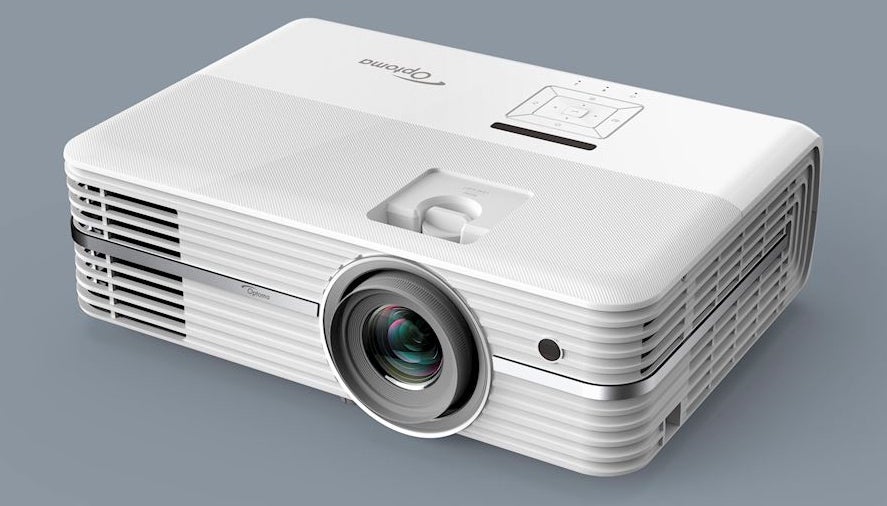

Verdict
It isn’t perfect, and may not suit serious home cinema enthusiasts, but the Optoma UHD52ALV has plenty of appeal for anyone after a simple-to-use and easy-to-watch living room projector.
Pros
- Bright, punchy HDR pictures
- Runs quietly, even in high lamp mode
- Impressive voice control and external source support
Cons
- Black levels could be better
- Peak HDR colours can “flare out”
- High input lag for a DLP projector
Key Features
- Voice control supportExternal Alexa or Google Home devices
- TapCast and iMirror screen-mirroring
Introduction
The Optoma UHD52ALV is a 4K DLP projector with a difference: you can talk to it. In keeping with most smart TVs these days, it comes with support for Alexa and Google Assistant.
That isn’t the end of its “smartness”, either. It also supports smart device screen mirroring, a built-in media player, and wireless streaming. And, as if all that wasn’t enough, it’s also bright enough to be watchable in a normal living room, daylight and all.
Let’s just hope Optoma has nailed picture quality alongside all those friendly features.
Availability
- UKRRP: £1499
- USARRP: $1699
- EuropeRRP: €1790
- CanadaRRP: CA$2469
The Optoma UHD52ALV was released in 2019 for the price of $1499 / $1699 / €1790 / CAD$2469. In terms of pricing this puts it at the affordable end of the ‘4K’ projector field.
Design
- Small footprint
- Glossy white finish
- Plastic build quality
There’s nothing particularly unique about the UHD52ALV’s design, but it’s attractive enough to sit on a coffee table without ruining your decor.
For starters, it’s fairly small for a projector that claims to deliver 3500 lumens of light output and 4K support. It’s finished in a glossy white, and rounds off all of its edges for a softer, more relaxing shape.
The top edge is home to a full suite of almost-flush, gloss-white buttons, while a window above the lens cowling provides access to a twisting knob for vertical image-shifting, and a simple zoom “slider”. A black ring around the protruding lens handles focus.
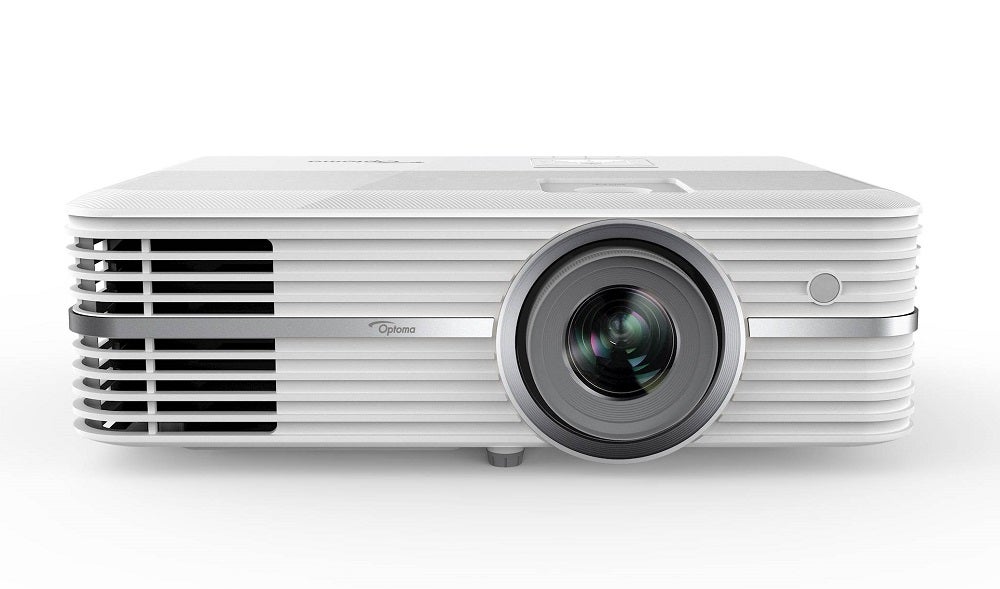
Not even the Optoma UHD52ALV’s heavy gloss can completely disguise the appearance of the abundance of plastic that makes up its body. But this is to be expected of a potentially quite-high performance 4K HDR projector that costs only £1600.
The Optoma UHD52ALV’s remote control is unusually small, which makes it easy to lose down the back of a sofa. It’s sensibly laid out, however, and doesn’t go overboard on buttons. Unlike the handset provided with the Optoma UHD51ALVe, this unit comes with some neat backlighting, making it far easier to use in a dark room.
Features
- Voice control via external device
- 3500 lumens of brightness
- Not true native 4K picture
Being able to control a projector just by talking to it (via an external Alexa or Google Home listening device) is a novelty.
The sort of instructions you can give are relatively limited: “Alexa, change the input to HDMI 1 on projector”; “Alexa, power up projector”; “Alexa, set volume to 5 on projector” and so on. But anything is better than nothing – especially if you can’t find that diddy remote control.
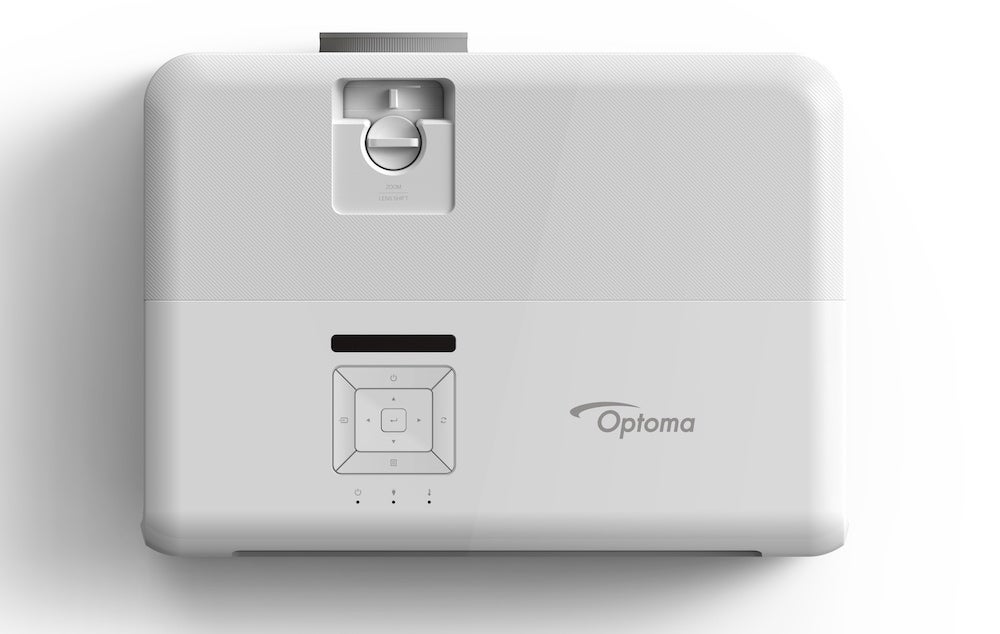
Optoma provides one wireless USB dongle free with the UHD52ALV, which you’ll need to attach to the USB port on the left of the projector’s rear to activate voice recognition. If you want to enable the projector’s wireless streaming features, you’ll have to swap the dongle to USB2 or sort yourself out with a second USB Wi-Fi dongle.
The Optoma UHD52ALV can play a wide variety of photo, movie and music formats via networked devices or a USB drive connected to its third USB port. It can also handily show a mirror image of your smart device’s screen via the TapCast/iMirror apps.
The projector’s image specs make for impressive reading. Maximum light output is rated at 3,500 lumens – up 300 lumens from the UHD51ALVe. Yet this considerable step up in brightness has been achieved without compromising Optoma’s claimed 500,000:1 contrast ratio.
The UHD52ALV uses a DLP optical system with a UHP lamp. Its claimed 4K support comes from its ability to flash each of its digital mirror devices multiple times a second, rather than a true native 4K mirror/pixel count.
This approach has consistently been able to deliver a resolution that’s superior to vanilla HD, though – even if it’s not quite up to the same level as true 4K projectors such as Sony and JVC’s latest SXRD and D-ILA ranges. These true 4K models are, of course, all much more expensive than the Optoma UHD52ALV.
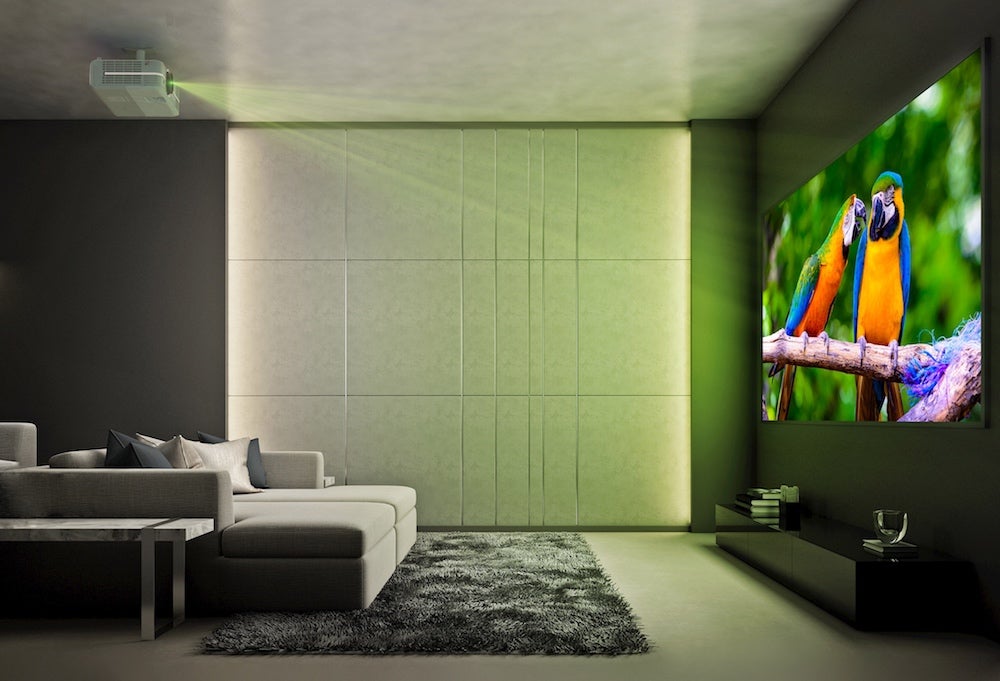
Despite its exceptionally high brightness, the UHD52ALV still runs surprisingly quietly – even in HDR mode. What noise there is, is smooth and consistent, which means it shouldn’t become a serious distraction even if you end up having to sit right next to the projector.
Connections include two v2.0 HDMIs capable of supporting 4K HDR at up to 60 frames a second. There are an eye-catching four USBs, too: one for the voice support USB dongle, one for the Wi-Fi dongle, one for USB storage devices, and a final one for service use.
Home network features are bolstered by an RS-232 port and a 12V trigger output. A 15-pin D-SUB PC port is on hand for older PC connection, along with a host of audio-related ports. These have been included because the Optoma UHD52ALV carries a built-in 2 x 5W sound system.
The UHD52ALV offers a wide range of picture presets. In HDR mode, for instance, you can choose between Bright, Standard, Film and Detail settings. Essentially, these sacrifice increasing amounts of brightness to preserve more vibrant colours and more detail in peak bright areas.
For SDR, preset options include Cinema, Reference and even a new HDR Sim mode that turns SDR into HDR.
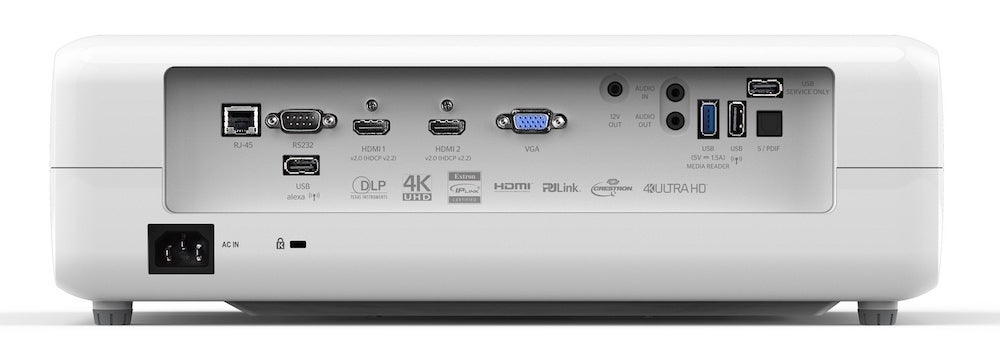
The Game mode is a bit odd, though, in that it doesn’t seem to cause any noticeable reduction in the time it takes Optoma’s projector to render its images. This is a pity since it means that even in this mode the UHD52ALV suffers from 84ms of lag. That’s plenty of time for you to get taken out by an online player.
There’s a Dynamic Black mode that continually adjusts the light output to suit the picture you’re watching, or you can choose steady Eco or Bright outputs.
The Optoma UHD52ALV’s HDR support covers HDR10 and HLG, while potential motion performance is bolstered by a PureMotion processor with off, low, medium and high settings.
If you’re still into 3D, the Optoma UHD52ALV supports it using the frame sequential/DLP Link system. No 3D glasses are included, however. In fact, Optoma no longer makes them. Third-party models from HiShock, Boblov and Apeman have all been confirmed to work with the UHD52ALV, though. I managed to get an ageing pair of BenQ active-shutter models to work for the purposes of this test, too.
Set-up
- Standard/Film HDR mode for dark rooms
- Easy to get images on the screen
- Wi-Fi set-up a bit complicated
The vertical image-shifting, a solid amount of optical zoom and the nicely calibrated focus ring make it easy to get the Optoma UHD52ALV’s images on your screen. Getting the best from its many picture adjustments, however, is trickier.
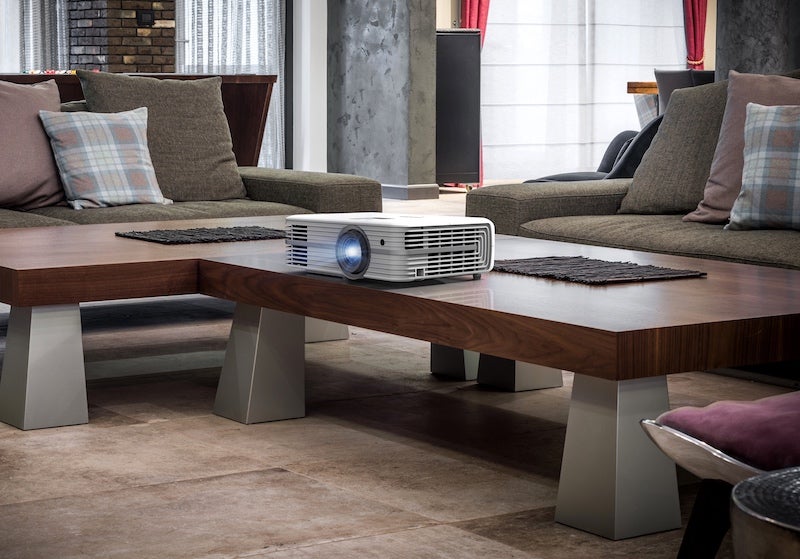
With HDR viewing, I’d recommend sticking with either the Standard or Film HDR Light settings if you’re in a dark room. If you have any sort of ambient light to deal with, opt for the Bright HDR setting.
For SDR, most viewers will prefer the Cinema mode or the surprisingly effective HDR Sim mode. The latter really does add greater brightness and dynamic range to SDR content without excessively exacerbating noise, reducing black levels or making colours look forced.
On balance, I found the Dynamic Black lamp setting worth using in a dark room since it increases the picture’s contrast. However, you get fractionally deeper black levels, marginally more stability and slightly more balanced colours using Eco mode.
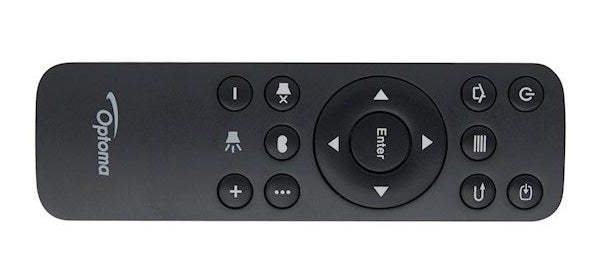
I’d also suggest setting the gamma to 2.4 for movie viewing, rather than the Cinema mode’s default 2.2 setting – as this delivers images with more punch.
The PureMotion processor is solid as such processing systems go. It really can reduce judder considerably, especially on its highest power setting, without causing too many unwanted side effects. But the Optoma UHD52ALV handles motion without PureMotion so well that I just don’t see the point in adding a layer of processing to it.
Setting up the wireless features is a tad complicated due to the separate Wi-Fi dongle USB ports and the need to connect external voice listening devices. However, there isn’t anything that should be beyond the capability of those who already have an Amazon Alexa or Google Home device installed.
Performance
- Improvements over its predecessor
- Punchy HDR performance
- Black levels could be better
The Optoma UHD52ALV is a better performer than its UHD51ALVe predecessor. In fact, it’s a pretty attractive projection option even if you’re not particularly bothered about its fancy voice control features.
Its extra brightness really hits home. Images launched themselves off my neutral-gain screen, delivering some of the brightest HDR images I’ve seen outside of the ultra high-end projection market. HDR looks more HDR as a result.
The improved brightness doesn’t just raise the baseline light level of HDR sources compared with the UHD51ALVe, either. More surprisingly, it enables the unit to deliver more punch and intensity with the really bright highlights that help make HDR feel so realistic – reflections on metal and glass, direct shots of sunlight, stars, lights and so on.
The Optoma UHD52ALV’s new brightness also makes its pictures very good at combating ambient light, if you’re looking for a fuss-free living room projector.
Happily, the Optoma UHD52ALV’s brightness improvements have been achieved without compromising its black levels. Pictures look like they have greater contrast, not less.
That’s not to say that black levels have got significantly better. They’re still the weakest part of the UHD52ALV’s performance, leaving very dark scenes looking somewhat grey during dark room viewing. However, in mixed brightness scenes that make up the majority of most films and TV shows, the combination of the unchanged black levels and enhanced brightness at least creates the illusion of deeper black levels.
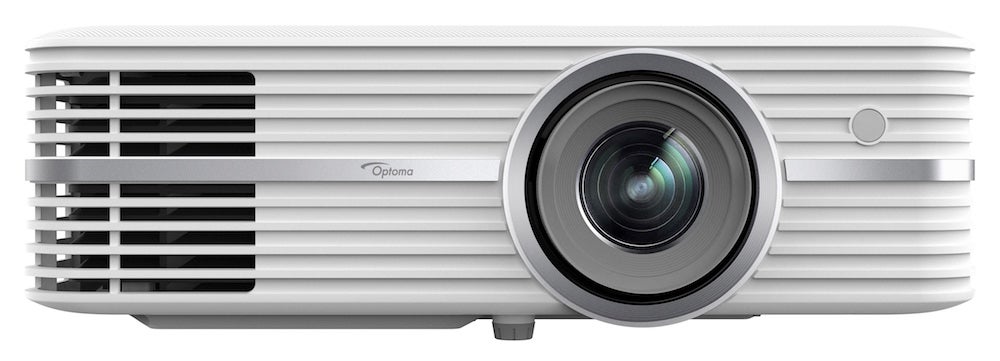
The grey overtone to dark scenes doesn’t stop the Optoma UHD52ALV from revealing impressive amounts of shadow detail, either. This gives dark shots a good sense of depth, making the greyness feel less important and overbearing than it otherwise might have been.
For most of the time, the Optoma UHD52ALV’s colours perform well. Skin tones look consistently believable. Tones usually feel well balanced, with no single colour looking too dominant. Best of all, the extremely high brightness doesn’t lead to colours becoming washed out during HDR viewing – a problem seen on many affordable HDR screens and projectors.
While the Optoma UHD52ALV’s pictures don’t look quite as detailed and sharp as those of good native 4K projectors, they do look sharper and denser than those of a mere full HD projector. Sort of three-quarters 4K.
Sharpness holds up well with HD sources, too, and there’s no excessive judder – even with the motion processing turned off – to hold back clarity.
This projector is a good 3D performer. Crosstalk ghosting noise is practically non-existent, and 3D pictures are detailed and sharp. This helps create a convincing sense of depth and space.
The Optoma UHD52ALV’s high brightness, meanwhile, combats the dimming effect of the active shutter 3D glasses, leaving the picture looking brighter than I’m used to seeing with 3D projectors. Despite the brightness, there are no issues with flickering.
Motion in 3D mode is a little unstable and indistinct at times, and you can’t use the PureMotion system in 3D mode. Overall, though, the UHD52ALV’s HDR- and ambient light-friendly brightness levels combine to make it a 3D hit.
The Optoma UHD52ALV adapts pretty nicely to HD/SDR playback despite its unusually high brightness. The Eco lamp mode makes SDR black levels look pretty decent, again without crushing out detail, and colours step down to SDR’s narrower gamut without looking flat or artificial. Even if you push up the lamp to Bright for viewing SDR in ambient light, the picture remains surprisingly watchable.
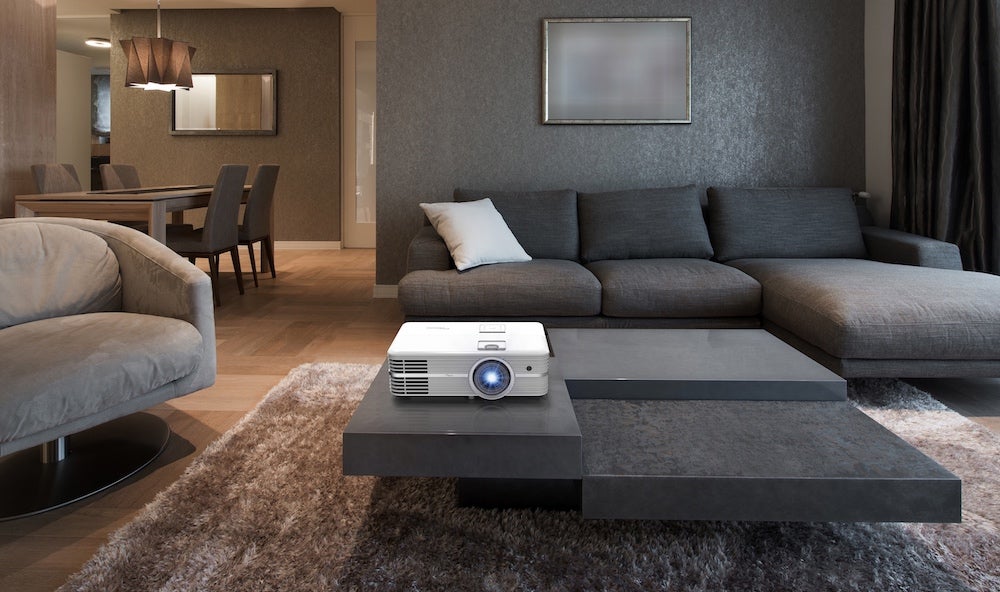
The Optoma UHD52ALV does have one or two picture foibles besides its average black level performance, however. First, when showing HDR, it can suffer pretty obvious clipping (loss of subtle shading detail) in areas of bright, vibrant colours. The CGI flames that pop up in Mad Max: Fury Road, for instance, tend to look like low-detail computer graphics. The pinkish parts of the sun-tinged clouds above Stark Tower at the start of Spider-Man: Homecoming also look rather radioactive.
Strangely, choosing the Standard HDR mode over Film mode reduces the issue. Normally, I’d have expected the lower brightness Film mode to have handled bright HDR colours better, but it doesn’t. This is particularly common with aggressively bright HDR movies, such as the 4000-nit masters of Mad Max and Pan.
There’s a touch of single-chip DLP’s rainbow effect (RGB striping) over small, stand-out bright parts of the picture. But I didn’t find this as distracting as I’d feared from such a bright and affordable projector.
Finally, playing 4K HDR at 60Hz into the Optoma UHD52ALV caused a few small glitches.
Sadly, the Optoma UHD52ALV’s audio doesn’t improve much on the underwhelming audio of its predecessor. Everything sounds pretty thin and weedy, and nothing projects far from the projector, meaning the sound feels dislocated from pictures.
The speakers in my sample also seemed to switch off entirely during moments of silence or near-silence, and then switch back on when the sound kicks back in. This caused noticeable and frequent dropouts with some films. Optoma is currently investigating this issue, and I will update this review if anything interesting turns up.
Should you buy it?
You’re after a more ‘casual’ projector The UHD52ALV has the ability to adapt to dark or bright rooms much better than most rival “living room” projectors. This ensures that it has plenty going for it as a casual living room projector.
You need a dedicated home cinema projector If you’re looking for a projector to go into a dedicated, blacked-out cinema room, the Optoma UHD52ALV probably isn’t the model for you. You can get better black levels and improved peak HDR colour handling with more dedicated home theatre models.
Verdict
It isn’t perfect, and may not suit serious home cinema enthusiasts, but the Optoma UHD52ALV has plenty of appeal for anyone after a simple-to-use and easy-to-watch living room projector.







